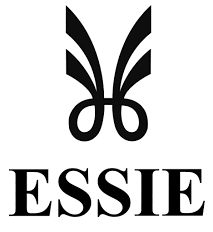Fine Persian Mahal Carpet
Rug #136Fine Persian Mahal Carpet Allover design Wool Pile
There is no actual city, or area that was responsible for the so-called Mahal carpets. At the end of the 19th century, Arak, (Sultanabad) was both the main weaving town and the marketing centre for all the weavings made in the area. To the north was the Feraghan area, to the west, Seraband, and to the east the Mushkabad and Mahallat regions. Towns included Malayer, Saruk and Lillihan. This was one of the most productive weaving areas of western Iran, and indeed still is. It is possible that the name Mahal was originally derived from Mahallat, although it is unlikely that all weavings called Mahal and marketed as such were actually made there, just as all the carpets called Mushkabad were not necessarily made there rather than anywhere else in this area. It seems that initially that the best carpets were sold as Sultanabads, (or if made in the Ziegler workshops, as Zieglers), the best rugs and carpets made in Saruk and the surrounding areas and small towns and villages were sold as Saruks, and those carpets in what could be described as the typical Feraghan style were sold as Feraghans. The best examples of other distinctive types, those from Lillihan, Malayer, and Seraband, were also sold under the names of those specific places. All other rugs and carpets were divided into two main groups: the best were sold as Mahal and the rest as Mushkabad. In recent years, the name Mahal has been used to describe a particular group of carpets, usually floral, like most of the weavings from this area, are asymmetrically knotted; the majority have bleached white cotton warps and dyed blue cotton wefts.
Fine Persian Mahal Carpet. This piece was handwoven in Mahal , Iran. For further information please contact us and our team will be pleased to assist you. All pieces in the collection are under the auspices of Essie Sakhai, one of the world’s foremost experts and collectors of fine handmade Persian rugs and carpets.

Delivery
Delivery
Enjoy Complimentary Express Delivery at Checkout
Free express next-day delivery on all UK orders.
Free express delivery on all international orders above £2,000.
Estimated Delivery Times
Please allow between 1-3 days for UK, Europe and United States destinations and 5-7 days for Far East, South America, Middle East destinations.
Please note that orders placed after 12pm (UK time), on the weekend, or during holidays will be processed on the following business day. You will be provided with a shipping tracking number once your order has been shipped.
Collection from our Mayfair London showrooms
In-store collection will be ready within 1 business day. To collect in-store you will be required to show confirmation e-mail, official photo ID (passport or driving license) and the payment card used for the order. If someone else is collecting on your behalf, please make sure they bring a letter of authorisation that permits this person to collect on your behalf, official photo ID of the purchaser and of the person collecting and confirmation e-mail.

Exchanges
Exchanges
Essie Carpets offers clients a lifetime exchange service on any items purchased from us should you wish to change your carpets at any time in the future, subject to the item being in good condition; this can be particularly useful when redecorating your home, or when an upgrade in type or quality is desired.

Payment
Payment
Payments are accepted via credit card or debit card with a valid billing and shipping address*. Accepted credit cards are Visa, American Express, and Mastercard. When placing an order, your billing address must correspond to the address of your credit card, or we will not be able to process your order.
Bank Transfers are also accepted; in order to pay by Bank Transfer, please contact our Client Services via telephone at +44 20 7493 7766 or e-mail at sales@essiecarpets.com.
All transactions are secured. The Essie Carpets website is provided with an SSL encryption system to protect personal and payment data.
Similar Carpets
-
 Majestic Persian Ziegler Mahal Carpet - Oversize 542 x 373 cm
Majestic Persian Ziegler Mahal Carpet - Oversize 542 x 373 cmRug #2048 Majestic Persian Ziegler Mahal Carpet - Oversize POA
Majestic Persian Ziegler Mahal Carpet – Oversize
-
 Persian Mahal Carpet - Fine Wool - Oversize 502 x 410 cm
Persian Mahal Carpet - Fine Wool - Oversize 502 x 410 cmRug #5092 Persian Mahal Carpet - Fine Wool - Oversize POA
Persian Mahal Carpet – Fine Wool – Oversize
-
 Persian Mahal Wool Carpet - Allover Design 374 x 293 cm
Persian Mahal Wool Carpet - Allover Design 374 x 293 cmRug #249 Persian Mahal Wool Carpet - Allover Design POA
Persian Mahal Wool Carpet – Allover Design
-
 Persian Mahal Wool Carpet – Allover Design 421 x 307 cm
Persian Mahal Wool Carpet – Allover Design 421 x 307 cmRug #248 Persian Mahal Wool Carpet – Allover Design POA
Persian Mahal Wool Carpet – Allover Design
-
 Fine Persian Mahal Carpet 426 x 315 cm
Fine Persian Mahal Carpet 426 x 315 cmRug #2710 Fine Persian Mahal Carpet POA
Fine Persian Mahal Carpet
-
 Magnificent Persian Mahal Carpet 790 x 409 cm
Magnificent Persian Mahal Carpet 790 x 409 cmRug #5256 Magnificent Persian Mahal Carpet POA
Magnificent Persian Mahal Carpet

















